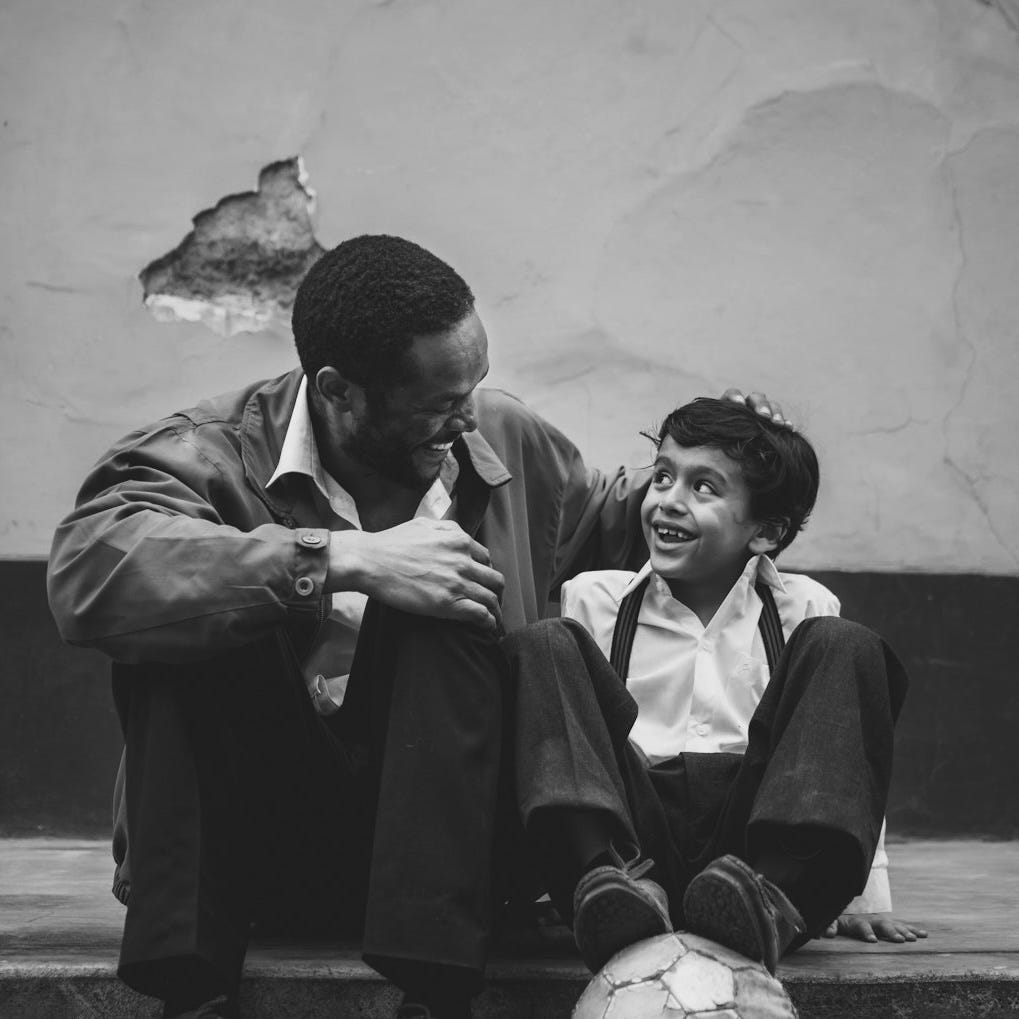How Do I Forgive and Heal from the Wounds of the Past?
Chapter One from the next book “Faith in the Ruins: Pastoral Responses to Questions Christians are Asking”
A few weeks ago I posted that we would begin a series on the questions that Christians ask the most these days (based on research of several indicators, see the relevant article here). So, here is the first installment. I pray it is of help for someone and that Christ is honored and lifted up.
This will be “CHAPTER 1: The Problem of Sin and the Power of the Gospel” in the book, Faith in the Ruins: Pastoral Responses to Questions Christians are Asking (subject to the publishing telling me they have a better title!).
“Jesus said to him, ‘I am the way, and the truth, and the life. No one comes to the Father except through me’” (John 14:6 ESV).
“We love those who know the worst of us and don't turn their face away.”—Walker Percy, Love in the Ruins (1971)
The Worm of Sin and the Membrane Between Soul and Body
Sin wounds the soul, sometimes in an instant—like a blade cutting deep—or, more often, like a burrowing parasite working its way inward. A wound left untreated in the spirit does not remain confined. Like an unseen, sinister worm, it presses against the fragile membrane that separates the metaphysical from the physical, gnawing until it breaks through. When it does, the affliction spreads beyond the soul, manifesting in the body.
Sleepless nights, anxiety, tension in relationships, bitterness that corrodes—these are but symptoms of a deeper spiritual infection. And just as a disease of the flesh demands the attention of a physician of the body, so too does the corruption of the soul require the care of a physician of the spirit.
I do not diminish the importance of medical treatment. I always prioritize referrals when I discover that diseases of the soul have penetrated the Physicians, neurologists, and psychiatrists provide necessary interventions that ease physical suffering. But if the wound is ultimately spiritual, then medicine alone treats the symptom, not the disease. The cure must go deeper—down to the very root of the wound.
So what do we do? So where do we turn? We turn to the Cross. The passion, death, and resurrection of our Lord Jesus Christ form the divine pattern for healing. If we follow Him through His suffering, we will also share in His restoration.
Yet what I offer here is not merely a guide for ministers or trained biblical counselors. This is for the Frontline of life—for you, for me, for anyone whom God calls to be present when another soul is in need. Healing is not reserved for specialists; it is entrusted to God’s people. The Gospel is understood by a little child, and so too must the means of healing be simple, clear, and ready to be applied in everyday encounters.
Perhaps you are a friend sitting across the table from someone who suddenly opens up about a wound long buried. Perhaps you are a family member, a neighbor, or even a fellow traveler on a plane, drawn into a conversation that unexpectedly turns from casual chitchat to a heartfelt cry for meaning. In those moments—divinely arranged in the providence of God—you may not have hours for deep counseling, but you have something better. You have the truth of the Gospel.
And often, the first step in ministering that truth is not speaking, but being present.
The Ministry of Presence
In military chaplaincy, we often speak of the ministry of presence. It is a vital concept in the field, but it is no less essential for the Frontline of everyday life. At its core, the ministry of presence is simply being there. It is the quiet but powerful act of sitting with someone in their suffering, offering no immediate answers, no rushed solutions—just yourself, filled with the Holy Spirit, fully attentive and available. In my experience I have observed that there are a minority of believers who possess this gift within themselves, by birth or by spiritual gifting (realized or cultivated, usually, of hard experience). But the ministry of presence is a requisite pastoral trait that must be taught to every fledgling shepherd of Christ’s flock. We must practice the ministry of presence to counsel effectively (i.e., faithfully). We live in a world where most conversations are filled with interruptions. People do not truly listen; they wait for their turn to speak. When someone shares their burdens, we are often tempted to respond too quickly, to offer advice before we have fully heard their heart. But gospel healing often begins with listening. Really listening.
The presence of the Holy Spirit within a believer means that simply by being near, by being still, and by being receptive, we become vessels of divine peace. The wounded soul needs space to speak, to be heard without judgment, to pour out the pain that has perhaps never been voiced before.
This is the presence of Christ through His people. Just as Jesus sat with sinners, walked with the broken, and allowed them to speak, so too must we create space for those who are suffering. The moment of silence, the attentive gaze, the patient waiting—these are not empty gestures. They are the first step of healing.
As we walk through the healing steps that follow, remember: before words of wisdom are spoken, before Scripture is applied, before prayers are lifted, the ministry of presence is the foundation. It is where healing begins.
The Gospel’s Healing Steps
1. Go to Gethsemane: Surrender in Prayer
John 18:1 – “When Jesus had spoken these words, He went out with His disciples across the brook Kidron, where there was a garden, which He and His disciples entered.”
Healing begins in prayerful surrender. Before Jesus bore the Cross, He went to Gethsemane, where He fell before the Father, crying out in agony, yet submitting: “Not My will, but Yours be done.” (Luke 22:42).
So too must we lay down our wounds before God. Holding onto bitterness and control only deepens the affliction. True healing begins when we surrender our burdens in prayer.
2. Take Up the Cross: Facing the Burden
John 19:17 – “And He went out, bearing His own cross, to the place called The Place of a Skull, which in Aramaic is called Golgotha.”
Jesus bore His Cross, knowing the pain ahead. We too must acknowledge our wounds, rather than avoiding them. Healing does not come through denial but by bringing our brokenness to Christ.
3. Take Off Your Crown: Humility and Repentance
John 19:2-3 – “And the soldiers twisted together a crown of thorns and put it on His head…”
Jesus, the rightful King, did not cling to His crown but bore the shame of thorns. Likewise, we must surrender our pride, self-righteousness, and any sense of entitlement to justice.
4. Forgive for the Sake of Christ
John 19:30 – “It is finished.”
Jesus forgave even as He suffered. “Then said Jesus, ‘Father, forgive them; for they know not what they do’” If He could forgive those (who whom He had made) who nailed Him to the Cross, how can we withhold forgiveness? Jesus forgave those who beat Him, mocked Him, cursed Him, speared him, and crucified Him on the timber from a tree that He created. We forgive out of the abundance of His mercy shown to us.
5. Go to the Tomb: Embracing Resurrection Power
John 20:6-7 – “Then Simon Peter came, following him, and went into the tomb. He saw the linen cloths lying there.”
The Cold War Polish-American poet, Czeslaw Milosz (ches-laf Mee-ah-sh), wrote,
““Christ is risen.’ Whoever believes that
Should not behave as we do.”1
The cross of Christ—the full theological truth of that historic event— has the power to transform a soul like nothing else. But the crucifixion is part of the story of the Cross, and a vital one, for He is our substitute for atonement. But part two is also necessary for the story if the Cross. Death is not the end. The resurrection changes everything. Just as Christ left the grave, we too must leave behind the old wounds and step into new life.
6. Leave the Old Garments Behind: Walking in Newness of Life
John 20:16-17 – “Jesus said to her, ‘Mary.’ She turned and said to Him, ‘Rabboni!’ Jesus said, ‘Do not cling to Me…’”
Mary had to let go of the old to embrace the new reality of resurrection. We too must leave behind the garments of bitterness, regret, and shame.
Conclusion: A Life of Forgiveness
“Be kind to one another, tenderhearted, forgiving one another, as God in Christ forgave you.” (Ephesians 4:32)
Forgiveness is not a single event but a daily walk in grace. As we stay near the Cross—through Word, Sacrament, and prayer—we remain in the healing light of Christ’s resurrection.
Let us walk forward, leaving behind the ruins, and stepping into the joy of restoration.
A Final Word to the Reader
The steps outlined here will be explored in greater depth in the forthcoming chapter of Faith in the Ruins. However, we pray that this reflection serves as an encouragement to the people of God and, especially, to any who find themselves in need of the gracious forgiveness of our Lord.
For we all, at one time or another, stand in that place of need. And yet, the glorious truth remains: “God so loved the world that He gave His only begotten Son, that whosoever believes in Him should not perish, but have everlasting life” (John 3:16).
Christ lived the life we could never live. He died the death that should have been ours. And in His resurrection, He offers us new life, free from the wounds of the past. May this hope be yours today.
Questions for Personal Reflection or Group Discussion
1. Where have I seen the “worm of sin” manifest in my own life—either through my own actions or wounds inflicted by others? How has it affected me spiritually, emotionally, or physically?
2. How can I grow in the “ministry of presence”? In what ways can I become a better listener to those who are hurting?
3. In which area of my life do I need to surrender to God in a “Gethsemane moment”—acknowledging pain but entrusting the outcome to Him?
4. What does it mean for me to “take up my cross” in the face of suffering or injustice? How does Jesus’ example shape my response to life’s burdens?
5. How does my view of forgiveness align with Christ’s words on the Cross? Are there people or situations I am still struggling to release to God?
6. What does it look like for me to leave behind the “old garments” of past sin, shame, or regret? How can I more fully walk in the resurrection life of Christ?
Czeslaw Milosz, “Six Lectures in Verse, Lecture V,” Selected and Last Poems, p. 208-209.





